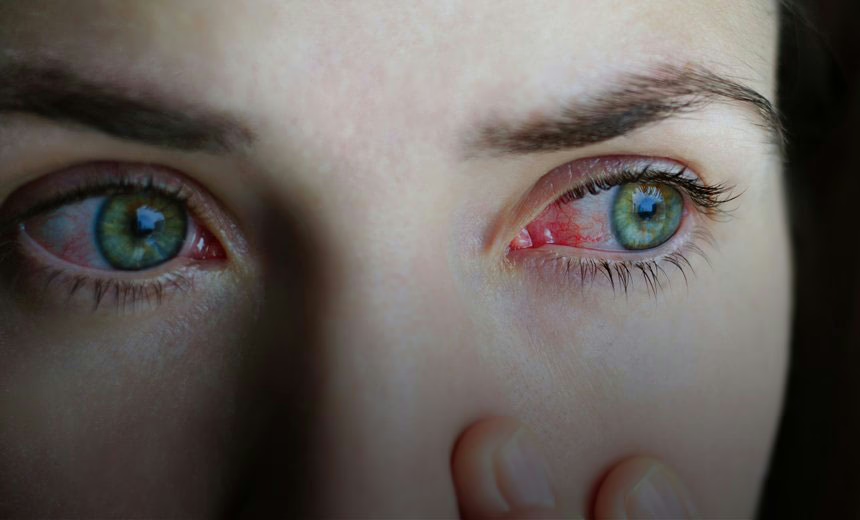"*" indicates required fields

Conjunctivitis
01/09/2017

The membrane that lines the eyelids and the white part of the eye (sclera) is called the conjunctiva. When the conjunctiva becomes swollen, irritated or infected, this is known as conjunctivitis.
When the small blood vessels in the conjunctiva are inflamed, they swell and become more visible, which causes the eyes to appear reddish. This common conjunctivitis symptom is the reason why the condition is often called pink eye or red eye.
Conjunctivitis is a common disorder and isn’t usually serious. However, any newborn baby with conjunctivitis should see a doctor immediately to rule out infection, which can be very serious.
Symptoms
Conjunctivitis symptoms can affect one or both eyes and include:
- Redness
- Itchiness
- A gritty, uncomfortable feeling
- A discharge, which can form a crust during the night and make it difficult to open the eye in the morning
- Excessive tears
- Swelling of the eyelid
- Sensitivity to light
Causes
There are a number of causes of conjunctivitis including viruses, bacterial infections, allergies, chemical injury, foreign objects in the eye, use of contact lenses over an extended period of time in adults and, in babies, a blocked tear duct. Less common causes are chlamydia and parasites.
Conjunctivitis is common in school-aged children because the viral and bacterial types can be easily transmitted from person to person.
Viral and bacterial conjunctivitis
Both types cause a watery discharge, while bacterial conjunctivitis can also produce a thicker, yellow-green discharge. Both viral and bacterial conjunctivitis can be associated with sore throats and colds.
Viral and bacterial forms of conjunctivitis are extremely contagious and can be spread through direct or indirect contact with eye fluid/secretions from an infected person.
Adults and children can both be affected. However, bacterial conjunctivitis is more common in children. In newborns, conjunctivitis caused by infection can be very serious.
Allergic conjunctivitis
Allergic conjunctivitis can affect both eyes and is often a response to an allergy-causing substance, such as pollen or animal dander. The body responds to these allergens by producing an antibody (immunoglobulin E), which triggers the release of inflammatory substances (e.g. histamines) from cells in the mucous lining of the eyes.
Histamines produce symptoms that include intense itching, inflammation, swelling, tearing, sneezing and a watery nasal discharge.
Traumatic conjunctivitis
A chemical injury or foreign object in the eye can cause conjunctivitis, resulting in red, watery eyes and a mucous discharge.
Neonatal conjunctivitis
Conjunctivitis in newborn babies can occur in the first month of life and must be assessed by a paediatric ophthalmologist immediately because it is potentially vision-threatening.
Conjunctivitis treatments
Bacterial conjunctivitis
Antibiotic eye drops may be prescribed for bacterial conjunctivitis. Even without medication, the infection should ease after several days.
An antibiotic eye ointment is sometimes used in children as this can be easier to administer, although it can blur vision for a short time after application. In either case, it is important to follow the doctor’s instructions and use the antibiotics for the recommended period to prevent a recurrence of the infection. Do not stop conjunctivitis treatment early, even if the eye seems better.
Viral conjunctivitis
Unfortunately, there is no treatment for this type of conjunctivitis. The virus needs to run its course, which may last for 2 or 3 weeks. It can often start with one eye and then infect the other eye. The symptoms will gradually clear up on their own.
Sometimes a doctor may recommend an antiviral medication if the herpes simplex virus is the cause. It is important for children to have their eyes checked to ensure that they are healing.
Allergic conjunctivitis
If an allergy is causing irritation, a doctor may prescribe eye drops containing medications that control allergic reactions (e.g. antihistamines and mast-cell stabilisers) or drugs that control inflammation.
The severity of allergic conjunctivitis can be reduced if the cause is known and deliberately avoided, although this may not always be possible.
Prevention
If someone you know is suffering from conjunctivitis, avoid contact with them. Children with conjunctivitis should not attend school until they are fully recovered.
Good hygiene is extremely important, as it will help to prevent the spread of conjunctivitis. Some suggestions include:
- Change pillowcases frequently
- Keep your hands away from your eyes
- Wash hands frequently (and make sure children wash their hands properly)
- Handle and clean contact lenses properly
- Don’t share towels, tissues or handkerchiefs
- Don’t share eye cosmetics
Complications
Complications are very rare, but severe cases of conjunctivitis can sometimes lead to scarring of the eye.
Infectious conjunctivitis can spread to other parts of the body, which may trigger a more serious secondary infection such as meningitis.
Summary
Conjunctivitis is a common disorder, especially amongst children but also in adults. Good hygiene practices, such as washing hands frequently, can prevent the spread of conjunctivitis.
If you have any symptoms that indicate you may be suffering from conjunctivitis, see your doctor or optometrist. A referral to an ophthalmologist is not generally necessary, unless the conjunctivitis does not resolve or gets worse, or if the patient is a newborn baby.
The information on this page is general in nature. All medical and surgical procedures have potential benefits and risks. Consult your ophthalmologist for specific medical advice.
Date last reviewed: 2020-10-29 | Date for next review: 2022-10-29
